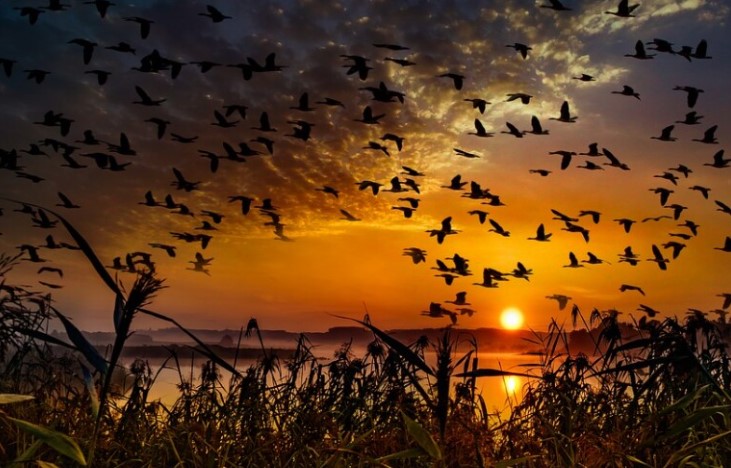In recent years, the proliferation of light pollution, particularly with the widespread adoption of LED lighting, has emerged as a pressing environmental concern. This issue is not just about obstructing our view of the stars; it is impacting the lives of migratory birds in North America at an alarming rate, with a growth of up to 10% annually, as observed through diminishing visibility of stars in the night sky.
A recent comprehensive study has shed light on a startling connection between light pollution and the behavior of migratory birds. The glow emanating from cities and their outskirts is proving to be a potent attractant for these birds, leading them into developed areas where food is scarce, and they encounter hazards such as collisions with glass buildings. The consequences of this attraction become particularly evident during the spring and fall migration seasons when birds, covering thousands of miles, embark on their journey to or from breeding grounds.

Migratory stopover sites, crucial for resting and feeding during the arduous journey, are not random; birds consistently return to the same locations year after year. Given the continental scale of migration, with billions of birds traversing North America each season, understanding the factors that attract them to these stopovers is vital.
The research highlighted light pollution as a key predictor of migratory bird density at stopover locations, both in spring and fall, across the continental U.S. Astonishingly, approximately 80% of North American birds migrate each spring and fall, with 70% of these undertaking nocturnal journeys. While nocturnal migration offers adaptive benefits such as favorable weather conditions and fewer predators, it makes these birds highly susceptible to light pollution.
The impact is staggering, with estimates suggesting up to 1 billion migrating birds succumbing to collisions with buildings annually in North America alone. The exact reasons behind the attraction of nocturnally migrating birds to artificial light remain unclear, but it is evident that light pollution exacerbates the challenges these birds already face during their taxing journeys.
Lighting, an integral part of human structures, is often overlooked as a pollutant with harmful effects on nature. However, events like the tragic mass bird loss in Chicago on October 4-5, 2023, when nearly 1,000 birds collided with the McCormick Place Convention Center, bring the issue to the forefront. This underscores the urgent need to address light pollution as a significant threat to bird populations.
To comprehensively understand the patterns of stopover densities, researchers collaborated with institutions including Colorado State University, Michigan State University, the University of Delaware, the Cornell Lab of Ornithology, Princeton University, the University of Massachusetts Amherst, and the National Park Service. By combining remote sensing data with geospatial tools and using U.S. NEXRAD weather surveillance data, they created continental-scale maps revealing fine-scale details of bird densities.
Surprisingly, light pollution emerged as a more potent predictor than variables such as temperature, precipitation, or tree canopy cover, traditionally associated with bird stopovers. This suggests that light pollution acts as an ecological trap, drawing birds into substandard habitats and increasing their collision risk with buildings.
Fortunately, addressing light pollution’s immediate effects is within our control. Initiatives like Lights Out campaigns, migration alerts, and the use of bird-friendly glass can significantly reduce bird deaths. Awareness and action are essential to reversing the harmful impact of light pollution on migratory birds, ensuring a safer journey for these vital species.
